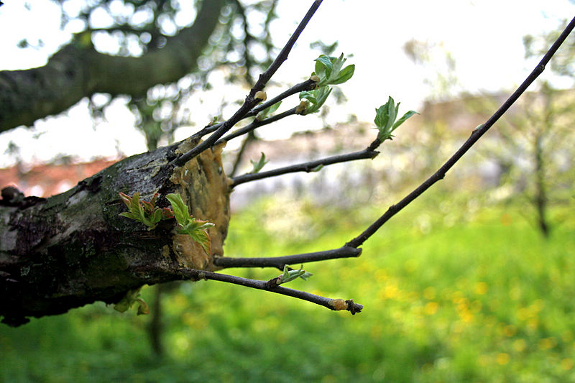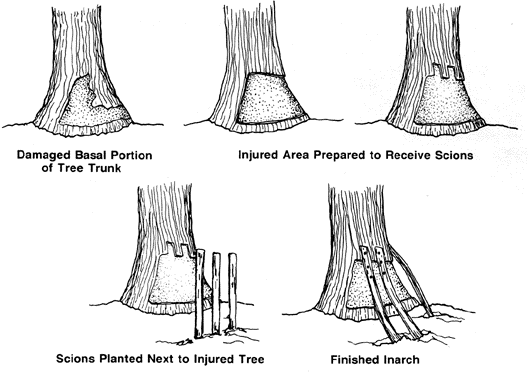
What can grafting do?
The
Grafter's Handbook
began its explanation of grafting by noting what grafting won't
do. Although we often think of grafting as a way of getting more
fruit trees, the techniques outlined in Garner's book won't actually
create more plants; instead, grafting changes rootstocks (what you
graft onto) from one variety to another, often impacting the tree's
size, disease-resistance, and other features in the process.
Another factor to consider is that grafting is easier with dicots (most
of the plants you're familiar with) and conifers than with monocots
(like grasses and garlic), and you shouldn't expect two different
species to survive if grafted together (although they sometimes will if
the species are related).
With those caveats
aside, grafting has much more potential than most of us have probably
imagined. A skilled grafter can:
- Make hundreds of baby trees of the same variety using whip-and-tongue or bud grafts.
- Change the variety of an older tree or create a fruit cocktail tree using topworking and frameworking.
- Save sick trees by bridging gaps in the bark, buttressing up weak limbs, or adding on more extensive roots.
- Study how various parts of a plant work.
As you might expect from
this extensive list of grafting results, there are scores of methods to
choose from, and Garner walks you through most of them. Luckily
for the beginner, most of these techniques have niche purposes, such as
changing the variety of rubber trees or connecting tomato tops to
potato roots, so only a handful of the grafting methods are really
necessary for the backyard plant propagator to learn. Later posts
in this lunchtime series will present the most common grafting
techniques that a homesteader might use, as well as information on how
to grow your own rootstocks, collect scionwood, and more.
| This post is part of our Grafting lunchtime series.
Read all of the entries: |
Want more in-depth information? Browse through our books.
Or explore more posts by date or by subject.
About us: Anna Hess and Mark Hamilton spent over a decade living self-sufficiently in the mountains of Virginia before moving north to start over from scratch in the foothills of Ohio. They've experimented with permaculture, no-till gardening, trailersteading, home-based microbusinesses and much more, writing about their adventures in both blogs and books.
Want to be notified when new comments are posted on this page? Click on the RSS button after you add a comment to subscribe to the comment feed, or simply check the box beside "email replies to me" while writing your comment.


